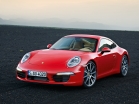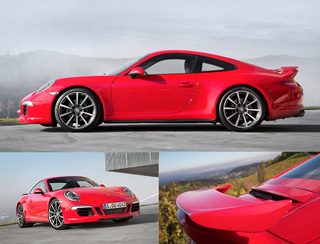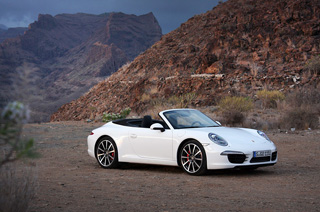Test drive Porsche 911 Carrera 991 since 2012
Both in winter and summer
 All year round on Porsche 911? In Russia, we must try, but in Germany it is easy! For example, Hornst Nonner, responsible for the carriage of these machines, drives in winter on an all-wheel drive Carrera 4 before last generation, not only because of ideological addictions. The latest nine hundred and eleventh waited for all -wheel drive.
All year round on Porsche 911? In Russia, we must try, but in Germany it is easy! For example, Hornst Nonner, responsible for the carriage of these machines, drives in winter on an all-wheel drive Carrera 4 before last generation, not only because of ideological addictions. The latest nine hundred and eleventh waited for all -wheel drive. In winter, in his yard, Herr Nonner often sees neighboring passenger cars, then sits in 911 Carrera 4 with a factory index 996 and leaves without problems on his own business. Eh, the German is cunning, of course. Corporate ethics can be done. However, there really is a share of truth in his words, and in relation to the new generation 911 Carrera 4 (factory index 991), this share has become even greater.
At the 996th nonner, the action scheme was quite simple: the transfer of the moment on the front wheels occurred through the viscous coupling. When slipping of the rear wheels, the viscosity of the liquid due to its special properties inside the coupling increased, and a blocked connection along the axes was obtained to one degree or another. Unfortunately, the process lasted quite a long time both in the direct (setting the coupling) and in the opposite direction (unlocking), and the latter negatively influenced the operation of the ABS system. The paradox, but the viscous coupling was used on the Porsche 911 sarrera 4 until 2008. The archaic node was replaced by more advanced, in which the lock occurs at the command of the control unit. In difficult conditions (for example, with a sharp start), the electronics provide almost instant triggering of a multi -disc supper. With minor changes, this design (see Fig.) Migrated to the 911 Carrera 4 of the new generation, which I tested on the mountain roads of the Austrian Graz.
Why are you using a coupling, not an interdose -cea differential? I ask Dr. Erhard Mesle, the technical manager of project 911. In the first generation of all -wheel drive Carrera, it was the Intersose differential that stood with us, explains Monal. It was asymmetric with a ratio of 31 to 69 in favor of the rear axle and was blocked by electronics. But the demanding and slightly capricious customers of Porsche were disappointed with a radical change in the nature of the machine, which lost its hereditary line of obvious excessive rotation. The engineers had to put a mechanism that would provide a drive to the rear wheels most of the time and only if necessary directed part of the moment to the front axis, at that time there was a viscous coupling with such a mechanism.
Austrian serpentines are narrow and covered with thick fog, so it was not possible to feel Carrera 4 in the limit. But the start from the place on the full drive, whether it is a robot with two PDK clutches or a magnificent 7-speed mechanics (both ZF production boxes) is a pleasure. With PDK, this is a blow in the back and 4 seconds to hundreds even for a recent graduate of a driving school, and with the mechanics an informative clutch pedal, a little dexterity (from the first one you sometimes get to the background for the rear hand) and the opportunity to hone your fast start all your life. Class, and most importantly, the new Carrera 4 is a way to extend the effect of the Adrenal attack Porsche 911 for the whole year!
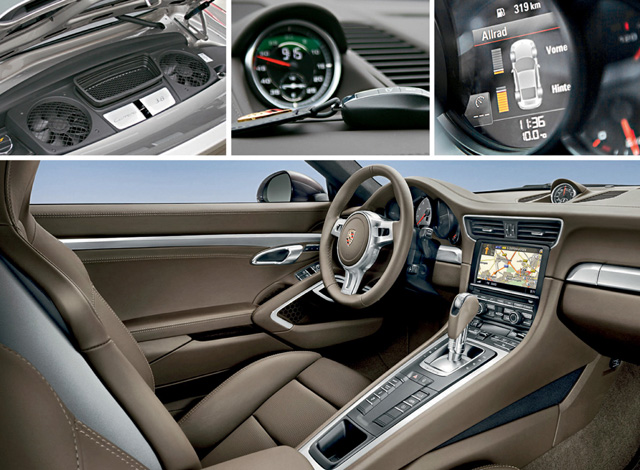
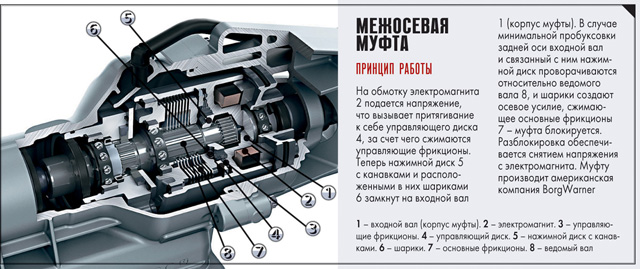
Source: Cars

